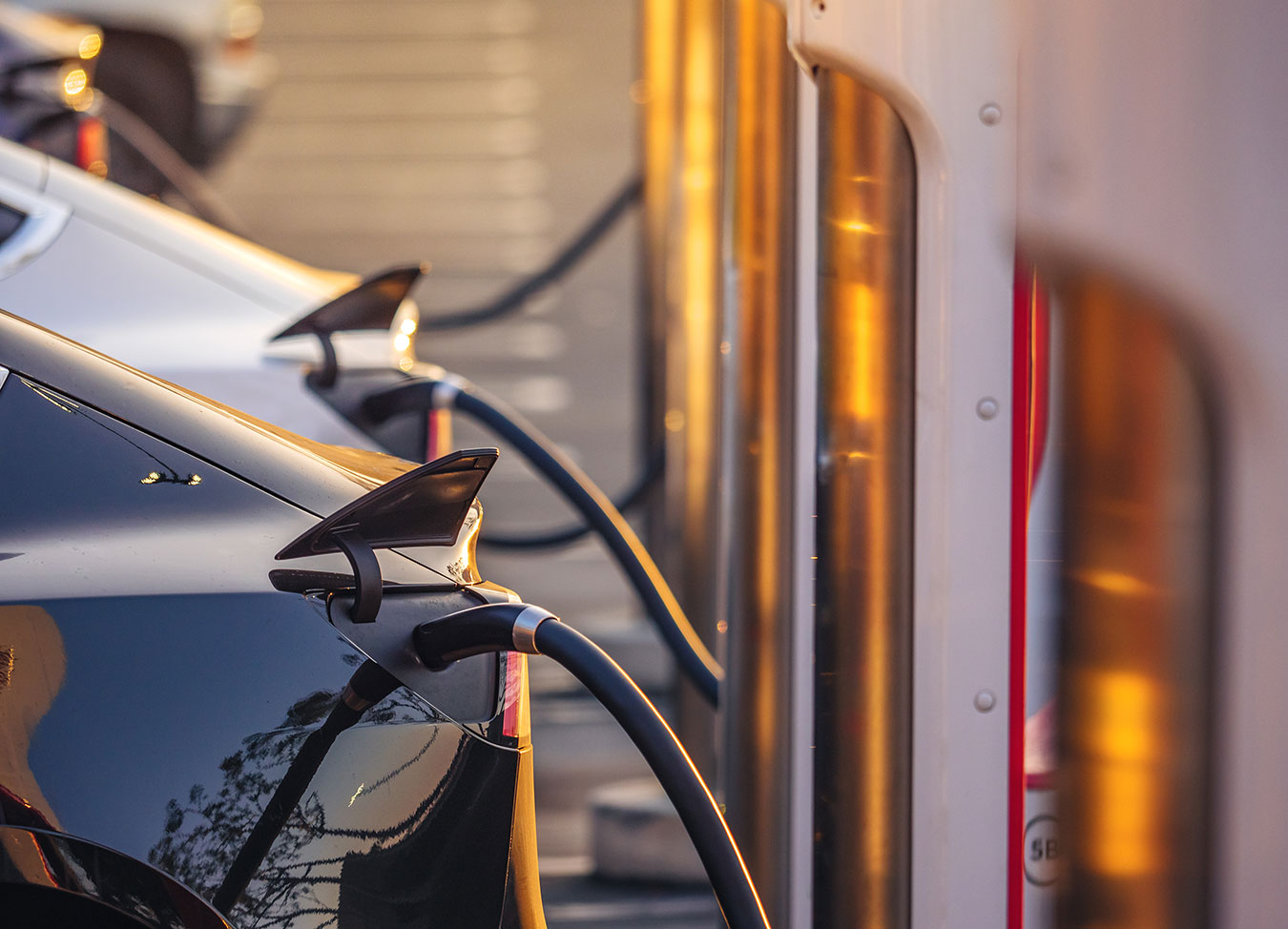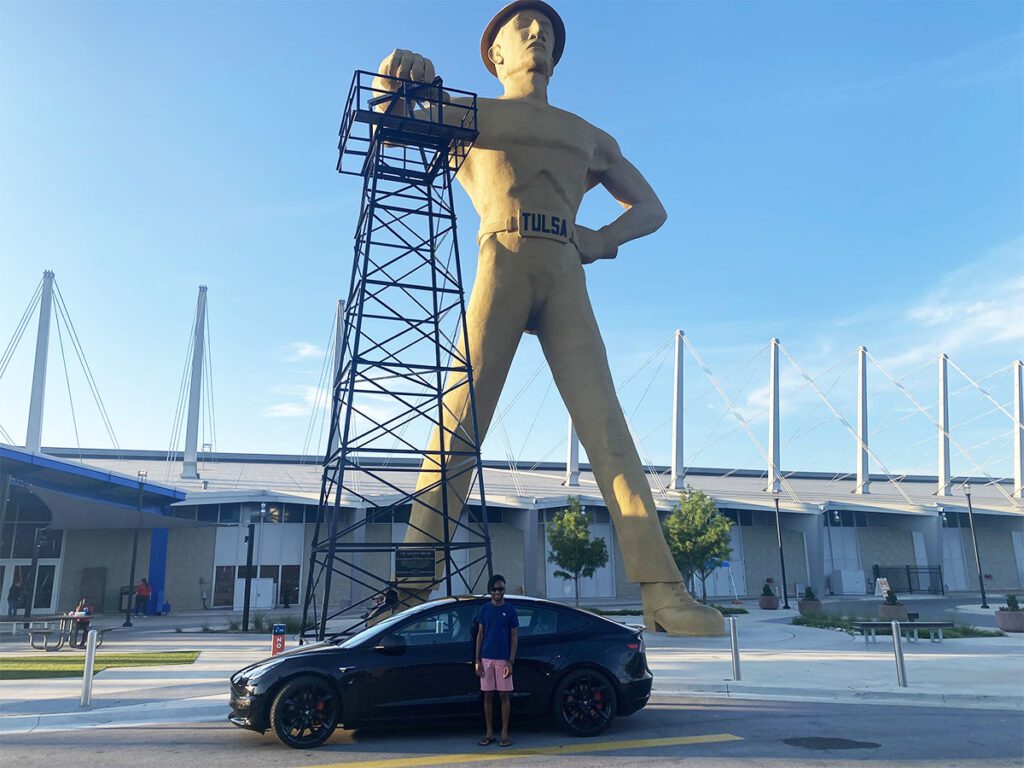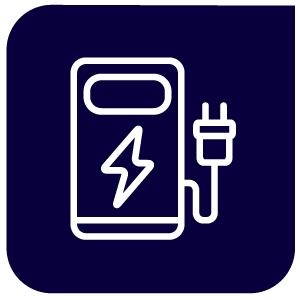
Now that I own an EV, I’m glad that I chose a Tesla rather than any other manufacturer. There’s one primary reason for that: Tesla supercharging stations are just…superior in every imaginable way.
Based on my experience, Tesla superchargers are located in well-lit, popular shopping districts. Note that these are different than Tesla destination chargers, which are the smaller, single (or maybe a couple) stations you typically see in parking garages or hotels. Superchargers are the big, iconic red and white stations that you might encounter at a Target or an upscale strip mall.
While owning a Tesla, I can charge at one of these locations or at a “normal” EV charging station such as Electrify America. If you’re looking for convenience (like I am), superchargers help maximize your quality of life. You just pull up, plug in, charge up, unplug, and drive off.
There’s no need to go inside a store or even swipe your card at a terminal. It’s all done via software. The charger will automatically determine your vehicle’s VIN and charge the credit card on file. While this makes the task less convenient if you want to pay with cash (impossible to do) or change cards, I prefer this approach compared to having to get out and swipe my card at other brands’ charging stations.
Fast, inexpensive charging
Charging from a low battery to 100% capacity generally takes only 20 to 30 minutes, depending on the output speed and number of other vehicles charging simultaneously. The charge-up costs around $6 USD. That’s about two gallons of gas (or less, when gas prices are high).
So far, it seems like the charging stations are always available and functioning properly. At stations that use the J1772, CHAdeMo, or CCS chargers, I’ve found that terminals are often down and require maintenance, or the screen or cord is broken due to vandalism or misuse. While I’m not saying superchargers are immune to vandalism, it seems Tesla makes it a high priority to fix problems and has a large enough staff to resolve those issues quickly.
Tesla recently announced that it’s willing to release their proprietary charging adapter to other EV manufacturers and have allowed other brands to utilize the Supercharger network. While I think this is a good move on Tesla’s part, it’s also far too late in the game for them to try to get the Tesla charger adapted for the North America Charging Standard (NACS…but not to be confused with “National Association of Convenience Stores” in our industry) regardless of how much better the charger is in terms of efficiency and ergonomics.
Lesson: If charging availability and convenience are your primary concerns with an EV, it’s difficult to beat Tesla’s charging infrastructure.
Would I recommend an EV?
I’ve been an EV owner for less than a year and I’ve lived in different areas of the country that tend to have differing mindsets about EVs. Tulsa has a very deep history with oil. Our baseball team is called the Drillers. Both our soccer and hockey teams are named the Oilers. And of course, this big guy also lives in Tulsa.

I think it’s safe to say that Raleigh had a much more accepting attitude toward EV adoption than Tulsa. Not that people in the Tulsa area are vehemently opposed to it, but there are just significantly fewer EV owners, charging stations, and hype around this topic.
Since I’ve experienced both ends of range anxiety, vehicle storage, and charging issues, I’d still recommend purchasing an EV if you’re interested. But there are still some questions yet to be answered:
- Will we early adopters likely sell our vehicles in a few years to buy more efficient models? Probably.
- Will EVs completely overtake ICE vehicles? Probably not…at least in the foreseeable future.
- Would someone who isn’t a homeowner make a good EV owner? Sure!
Even if you might not be ready to make an EV your only vehicle like I’ve done, I think everyone should at least drive an EV this year. Whether you rent one, test-drive one, or borrow one from a friend, I think you’ll be surprised at how good they’ve become, how quick they are, and how smoothly they drive. And you’ll probably be shocked at how quiet the drive will be.
The rate of EV adoption will depend heavily on our society and changing ideals. When I was in Europe last summer, it was obvious that people embraced EVs much more than Americans. To be fair, Europeans tend to make shorter trips, due to density and country size—but the overall acceptance of EVs across multiple cultures and nations was immediately clear. In the long run, I do believe that EVs are the future and their widespread adoption and normalization is only a matter of time.
Lesson: EVs are the future, even if that future is still a few years away. But the more you learn about EVs now, the better prepared you’ll be when the time comes to buy your own EV.
EV and Convenience

Learn more about EV and convenience with new resources in the EV Hub.


